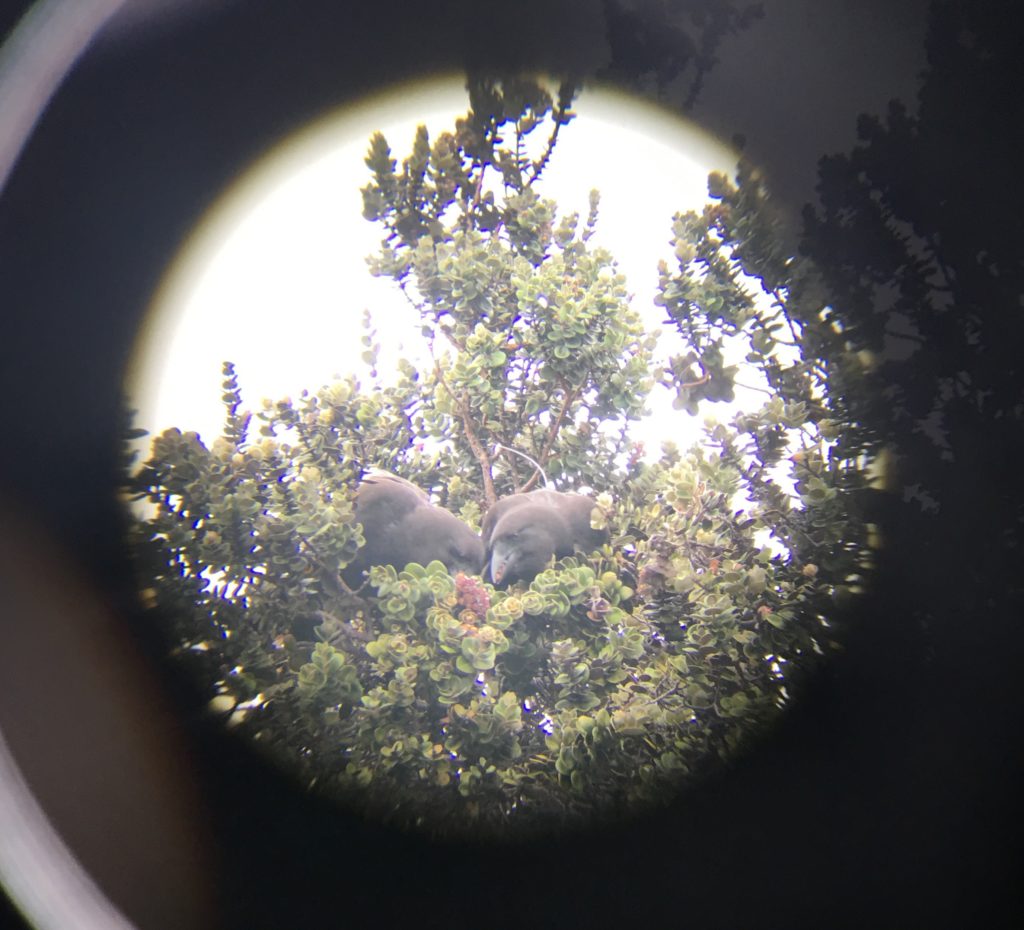
“Two ‘alalā in the Pu‘u Maka‘ala Natural Area Reserve have reached a new milestone, one not seen in the forests of Hawaiʻi for almost 20 years. They have built a nest,” The ‘Alalā Project announced in a May 8 press release.
The female, Manaiakalani, is believed to be incubating eggs, and the male, Mana‘olana, has been seen regularly bringing her food.
Another pair, Kia’ikūmokuhāli’i and Ola, have been seen placing sticks in the nook of an ʻohiʻa tree, but have not yet built a full nesting platform, the release continued.
The ʻalalā, a native Hawaiian crow, went extinct in the wild more than 20 years ago. But over the past two years, the project has released nearly two dozen birds into the reserve that were hatched and reared in captivity.
“Since there are no adult ʻalalā in the wild to learn from, the reintroduced birds have had to learn how to build nests, breed, and incubate, also guided by instincts,” the release stated. It also cautioned that as first-time parents, Manaiakalani and Mana‘olana may fail to successfully fledge chicks on their first try, which is common among wild birds.
“While these are exciting and encouraging steps in the reintroduction process of ʻalalā, the journey is far from over. There are many stages in the process, before the young fledge; the pair encounters natural and introduced threats, as well as environmental challenges,” said Jackie Gaudioso-Levita, the ʻAlalā Project coordinator and a wildlife biologist with the Department of Land and Natural Resources’ Division of Forestry and Wildlife (DOFAW).
The release states that this nest’s outcome will help guide future reintroduction efforts. More birds are set to be released later this year.
“Hawaiian forests are family; there is a shared ancestry among the people, plants, animals, and landscapes. By returning the ʻalalā to the wild, we are welcoming home a family member that has been away for a long time” said Rachel Kingsley, the project’s Education and Outreach Associate.
“The fact that these birds have been able to build a nest on their own shows that these birds are comfortable in the forest they live. Our family is growing,” she said.
Partners in The ʻAlalā Project include DOFAW, the U.S. Fish and Wildlife Service and San Diego Zoo Global.
— Teresa Dawson

Leave a Reply